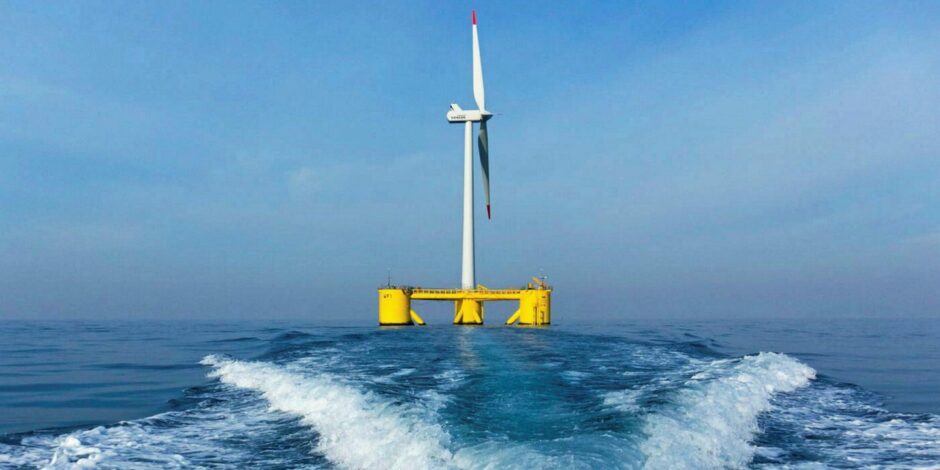
As many as 40 North Sea assets have been pinpointed as a good fit for electrification, an industry conference heard on Thursday.
Graeme Rogerson from the Net Zero Technology Centre (NZTC) shared the findings of an offshore decarbonisation study, undertaken by the organisation in partnership with the ORE Catapult.
He was among the panellists on the ‘targeting decarbonisation with floating wind’ session on the final day of the Floating Offshore Wind 2022 conference in Aberdeen.
A key focus of the session was the ongoing Innovation and Targeted Oil and Gas (INTOG) offshore wind leasing process.
Similar in approach to the recent ScotWind round, it allows developers to bid for seabed acreage that can house wind turbines.
But rather than being turned into commercial developments, INTOG projects will be hooked up to oil and gas assets to help cut operational emissions.
It is seen as a key enabler of the North Sea Transition Deal, and the sector’s pledge to reduce the environmental impact of producing hydrocarbons.
Mr Rogerson, senior project manager for integrated energy systems at the NZTC, said: “It is hugely important that INTOG is a success, and we’re here to support that leasing round.
“We see that there’s almost around 40 assets in the North Sea that are suitable for some form of electrification, either partial or full.
“There are a lot of assets out there that aren’t suitable, but there are around 40 we believe. A lot of the power-from-shore schemes and larger wind development projects that are being looked at are very good, but they might only touch on a quarter of those assets. So I wonder; are we paying enough attention to the potential for off-grid opportunities?”
Having kicked off in August, INTOG is due to close to bids next month, with the results expected to follow in March 2023.
From there, it will be a number of years before turbines are put in the water and platforms start to receive green energy.
Not all assets can be electrified though, and for many, particularly those entering their twilight years, turbines aren’t a financially prudent solution.
Sian Lloyd Rees, UK managing director for Aker Offshore Wind, said: “INTOG is one such route to decarbonisation, very focussed on direct electrification. That will work with some assets, but for others it wont, either economically or technically.
“So when we think of decarbonisation of oil and gas, we think of it more broadly than purely electrification. In fact, one of the options that we’re looking at with our 1.8 gigawatt (GW) Shetland floating wind development is converting the clean energy to hydrogen, and the onwards conversion to e-fuels.
“Then we’re talking about fuel switching. Substituting the fuel that drives the power generation of assets offshore, for clean, green fuel as we go forward. And the technology exists for most of this today.”

 © Supplied by NZTC
© Supplied by NZTC © Supplied by Shell
© Supplied by Shell
